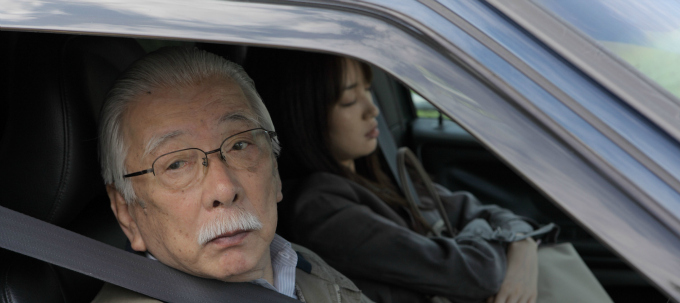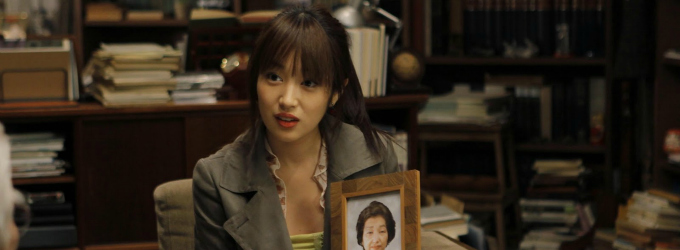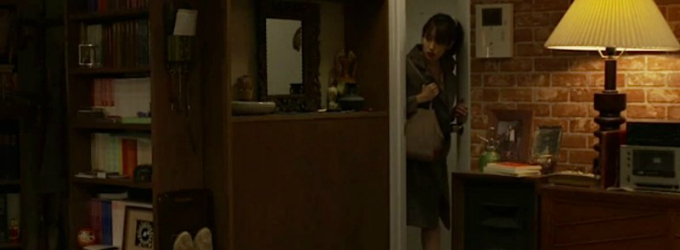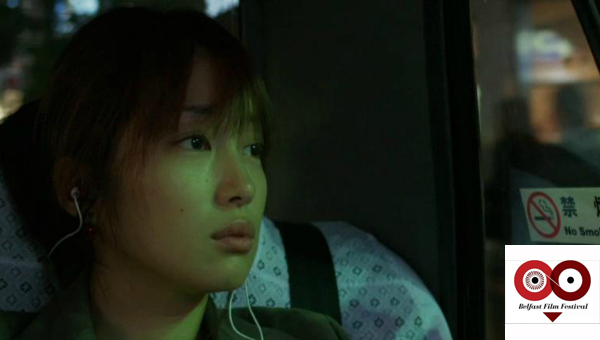 You have to adjust your view of traditional film narrative and structure if you want to get the most out of an Abbas Kiarostami film. That’s as true for his more experimental ‘art’ films like FIVE and SHIRIN as for ostensibly lighter and more mainstream arthouse fare like CERTIFIED COPY. Even with the latter, it’s an infinitely more rewarding film if you leave preconceptions behind and go with the flow, without worrying about making sense of its puzzle-box framework.
You have to adjust your view of traditional film narrative and structure if you want to get the most out of an Abbas Kiarostami film. That’s as true for his more experimental ‘art’ films like FIVE and SHIRIN as for ostensibly lighter and more mainstream arthouse fare like CERTIFIED COPY. Even with the latter, it’s an infinitely more rewarding film if you leave preconceptions behind and go with the flow, without worrying about making sense of its puzzle-box framework.
… a relatively straightforward arthouse movie on the surface, with a rhythm and flow of its own …
Kiarostami’s latest film LIKE SOMEONE IN LOVE is very much in this second category: a relatively straightforward arthouse movie on the surface, with a rhythm and flow of its own that subtly connects and links elements together to create a sense of something greater. Whether that is the same thing as creating something great is another matter, but that depends – as it should – on the receptiveness of the individual viewer.
Kiarostami’s views and subjects have always lain outside of concerns relating to mere nationality. Although made by an Iranian filmmaker and tackling social issues of education and women’s rights in Iran, their real concerns (most notably in TASTE OF CHERRY, THE WIND WILL CARRY US and TEN, but even in his earlier films) have been spiritual well-being, and the danger of becoming detached and alienated from that vital aspect of our identity in the modern world. Both the subject and the filmmaker’s increasingly detached techniques (working completely with a static in-car camera in TEN for example) do, however, share a common sensibility with the films of Yasujiro Ozu. That influence might not have been as readily apparent as the title of his 2003 film FIVE DEDICATED TO OZU suggests – the film consisting of five static shots of the sea with almost no human presence – but it’s much more apparent in the Tokyo setting for LIKE SOMEONE IN LOVE.
… a beautifully structured and shot film, but its technique also serves a deeper and more meaningful purpose.
Making a film in Japan in homage to Ozu is something of a near-impossible challenge that has previously been undertaken, with decidedly mixed results, by other Ozu-influenced directors like Wim Wenders (TOKYO-GA) and Hou Hsiao-hsien (CAFE LUMIERE). Abbas Kiarostami fares much better, not because he understands the nature of the Japanese people and their family ties better than the others, but rather because he is a more accomplished director when it comes to delving deep into the mysteries of the human soul. There is a trade-off that needs to be established between the apparent surface simplicity of the filming technique and its ability to express a connection with its subject. Kiarostami is certainly a stylist and LIKE SOMEONE IN LOVE is a beautifully structured and shot film, but its technique also serves a deeper and more meaningful purpose.
In narrative terms, LIKE SOMEONE IN LOVE is indeed simple and straightforward, but it’s surprising just how much more can be gained from the opening sequence of the film alone. Using a single point of view, Kiarostami’s camera gaze rests on two angles of a scene in a Tokyo hostess bar. From one angle we can see the activity in the bar where the hostesses are interacting with guests, while from the other angle we see (and sometimes just hear, since the view doesn’t always correspond with where we think the subject of interest lies) Akiko (Rin Takanashi), a young woman who is engaged in a dispute with her boyfriend. Since she is clearly lying when she tells Noriaki (Ryo Kase) that she is in a cafe with her friend, it’s clear that her boyfriend is unaware that Akiko works as a high-class escort in the evenings. It’s also clear – and not just to her boss Hiroshi (Denden) – that Noriaki is obsessively controlling and that she might be better off without a guy like that.
There’s more human significance to all this than a director just playing with symbols and themes.
After finally hanging up on Noriaki, once he got her to count the tiles on the floor of the toilets so that he could check up later to see if she really was in the place she said, Akiko reluctantly takes on a job for Hiroshi, travelling in a taxi to meet a client. Along the way she listens to a series of phone messages left on her mobile from her grandmother who has come down to Tokyo for the day, hoping that Akiko can meet up with her, waiting patiently and leaving messages from the train station and a nearby restaurant. Although she is reluctant to return the calls from this particular mobile that she uses for work – quite how her grandmother got hold of it is a mystery to her – Akiko asks the taxi driver to swing past the train station where the old woman is still anxiously waiting even as her train is about to leave. But Akiko, not unmoved, continues on her journey without stopping.
It’s not too difficult to spot a familiar device that has come to symbolise a sense of alienation in the modern world featuring prominently in these two scenes – the mobile phone. More than just expressing coldness, distance and lack of a human touch, what it really seems to represent in Kiarostami’s film is a sense of division and being in two places at once. Akiko is present in the hostess bar but she’s also having a conversation on another plane with her boyfriend, and at the same time pretending to be in a different place from where she actually is. Her grandmother’s messages meanwhile present her in different places within the short span of the retrieved messages, while physically she is actually standing outside a train station. Even Akiko is sitting in the enclosed space of the back of a taxi – the car another familiar Kiarostami alienating device – that reflects the lights of downtown Tokyo outside on the car windows (a standard shot, maybe, but one that is more meaningful here) while she is mentally in another place listening to the phone messages.
The phone features prominently also when the taxi driver tries to locate Akiko’s client, an old professor Watanabe Takashi (Tadashi Okuno) – whose answer-phone is in one place while he is actually in the cafe downstairs picking up food, and the answer-phone features considerably in the subsequent scenes in Watanabe’s apartment. But it’s not just the phone. There are indications everywhere that suggest a separation and division of the self – whether it’s the professor’s books, the photographs of his wife and family that remain there in the absence of the actual people, or the painting that they examine on the wall of the professor’s apartment. The latter is also one of a number of repeated references to Akiko looking like someone else. She’s Akiko but she’s also someone else.
Without being slavishly derivative of Ozu’s themes and techniques, then – which would be out of place anyway in this modern Tokyo – Kiarostami nonetheless recognises the essential human qualities in the sense of family and belonging, but also the elements of daily life that create a disconnect from their spiritual selves. The grandmother’s visit certainly evokes Ozu most strongly – the urgent little messages and her presence outside the station are near heartbreaking – but, as if this sense of Ozu’s concerns for traditional family life belong to a past age, Kiarostami and Akiko, for better or worse, leave them behind in this modern world. Nevertheless, their presence lingers, by no means forgotten, and resurfaces in a different context towards the end of the film.
These are not lives that can be defined according to standard narrative arcs of character development.
There’s more human significance to all this than a director just playing with symbols and themes. Which is just as well, since to anyone expecting a more traditional narrative structure, LIKE SOMEONE IN LOVE seems to flow along in a linear fashion with no real sense of purpose. These little points dotted here and there are what Kiarostami uses in place of regular narrative exposition or explanation, and they are there to be plucked out by the viewer and woven into a more complex picture that involves some degree of personal investment. These are not lives that can be defined according to standard narrative arcs of character development. People are far more complex than that, having public and personal lives as well as a physical and a spiritual dimension, and the connections between them and other similarly complex individuals cannot be entirely covered in the traditional filmed-theatre approach.
LIKE SOMEONE IN LOVE has at its heart a message that is not so difficult to grasp. (At least one. You’re free to come up with many others, and I haven’t even considered the significance of the film’s title which comes from an Ella Fitzgerald jazz standard that is played in the film). Again it’s a part-homage to Ozu and TOKYO STORY, where Setsuko Hara’s widowed Noriko shows more human feeling and care for her mother-in-law and father-in-law than their own children. Afraid that she has given herself away to a boyfriend who remembers and picks over every single detail, Akiko worries that Noriaki will figure out that the professor can’t be her grandfather who is a fisherman. It’s ok, Watanabe tells her, everyone has two grandfathers. Likewise Akiko has the freedom to choose which Akiko she wants to be. She can be a hostess or a Sociology student at university. She can stay with her boyfriend or she can leave him. There are always choices and alternatives.
http://www.belfastfilmfestival.org/
httpvh://youtu.be/7pldnaSGSyY


One thought on “Like Someone In Love”
Comments are closed.